A former college professor of mine recently reminded me of a very important fact: fruit pie season is upon us. And, indeed, with the first appearances of my beloved rhubarb gracing the produce stands – which will soon lead to deep red strawberries, plump blueberries, tart-sweet blackberries, and juicy peaches – he is correct.
With the advent of summer’s best gifts upon us, it occurred to me: I am yet to teach you how to make a pie crust.
Oh, sure, I’ve given you recipes for pie crust. I’ve even given you some quick tips. But really understanding how to make a great pie crust takes two things: seeing it done and practice. Now, I learned by watching my mother – the Queen of Pie Crust – for years before I took things into my own hands. If I had any video editing skills whatsoever, I would put together a video on this process – but that will have to wait for the future. For now, we’ll have to settle for a step-by-step photo tutorial.
The recipe I am using for this is the recipe I grew up on, and one my mother obtained in her high school home ec class (update: I was just informed that it is from her college food science class – either way, it’s been around for.ev.er). It is for a 9-inch single-crust pie and is – gasp! – an all-shortening (specifically, Crisco) recipe.
Now, lines tend to be clearly divided between all-butter and all-shortening pie crust makers. People like to sit clearly in one camp or the other, claiming their crust is the only way to go. We will explore the differences between the two camps in another post; for today we will focus on our method, as the method I am going to show you is the method I use regardless of the recipe I am using.
Start by whisking together your dry ingredients in a large bowl. Some people prefer to sift their dry ingredients – really I think this is purely personal preference, as I have never noticed much difference either way.
Add your fat – in this case shortening – and dust the top with a little bit of the dry ingredients. If you are using butter, you’ll want to make sure it is cold and cut it into pieces before adding it to the dry ingredients.
Use a pastry blender to cut the fat into the flour. Some people like to use two knives (which I find to be too tedious), their fingers (too messy), or a food processor (which I find takes away my control of the process) for this. I stick with the pastry blender.
You’re looking for a texture that resembles coarse meal, with a few pea-sized pieces of fat here and there. Those larger pieces are what will give you a flaky texture in the finished crust.
Now, two things to know before you add your liquid: 1.) It must be as cold as possible. If I am using water, I only use water straight from the fridge, and I sometimes even add some ice to that while I’m starting the crust. 2.) How much liquid you need will depend on a number of factors, but primarily on how dry or humid your surroundings are. My apartment is especially dry, so when I make pie crust at home, I need significantly more water than I do when I make pie crust at my parents’ house, which is not nearly as dry. Start with the amount indicated in your recipe, but have a little extra standing by, just in case.
Drizzle your liquid over the top of your flour-fat mixture. Alton Brown actually uses a spray bottle for this, which is not a bad idea. You want that liquid as evenly distributed as possible.
Now, use a fork to start mixing. One of the cardinal rules of crust making is to never over-work your dough – it will make the crust tough – and that begins here. Mix just until things start to come together; it will still look crumbly and maybe even a bit dry on the bottom.
Take a bit of dough and gently squeeze it in the palm of your hand. Does it stay together or crumble apart? If it stays together, you have enough liquid. If it crumbles, you’ll need to add a bit more, about ½ to 1 tablespoon at a time. The more crust you make, the better you’ll get at knowing when you need more liquid – I can pretty much eyeball it as I’m mixing.
Turn the dough out onto a floured surface. The pastry mat is not required, though it is nice as they often have measured rings that help when rolling – though I am going to show you a method for measuring your crust in a minute. These also make picking up your crust a bit easier later. You can also use some parchment paper, though be sure to weigh down the corners to keep it from sliding around later. If in doubt, your counter-top will probably work just fine.
You’ll notice that this does not look at all like dough – yet. “But it’s all crumbly and a mess!” That’s ok, it will come together.
Use your hands to start bringing the dough together into a disk. Give it a little pat, even a press or two with the palms of your hands – remembering not to work it too much – to bring it together. If you are working with dough that contains butter, now is when you’ll want to wrap it up in plastic and chill it for about 30 minutes before rolling.
When getting ready to roll, I start by gently patting the dough out with my fingers just slightly. I find this helps keep my dough from cracking when I start in with the rolling pin.
Lightly dust the top of your dough and your rolling pin with flour – I have this handy nonstick rolling pin that I love for pie crust – and start rolling from the center to the outer edge, making sure to move in all directions so that your crust stays in a general circular shape and doesn’t become an amoeba. Your edges still won’t quite be perfect, and that’s totally ok. If your dough cracks as you are working, use a drop or two of the extra water on your fingertips to gently press it back together. {Notice how I keep saying “gently”? I wasn’t kidding about that not-overworking-your-dough thing.}
Now you’ll want to start measuring your crust to see how much more rolling you need to do. Take the pie plate you are planning to use and place it upside down over the dough. You should have at least an inch to an inch and a half of dough outside the edges of the pie plate (if you are using a deep-dish pie plate, you’ll need closer to two inches). Continue rolling and measuring until you get there.
Now: time to move your crust. This is the trickiest part, but here’s the best way I’ve found to go about it: Take a lightly floured dough blade or butter knife (Alton Brown actually uses dental floss for this…I’ve never tried it, but imagine it would work well) and work it gently under the edges. Even the best floured surface will still have some sticky spots, and using the blade here helps release those without tearing your dough right down the middle.
Then, using the blade to help you as needed, gently fold the dough in half…
…then into quarters.
Place the quartered dough into your pie plate…
…unfold it…
…and settle the dough into your pie plate, using your fingertips (and excess dough) to gently press together any cracks or tears.
If you are making a double-crust pie, you will go ahead and add your filling and your top crust (same method!), gently pressing the edges of your crust together before trimming and crimping.
To trim the edges, just run a butter knife around the edges.
Everyone has a different way that they like to crimp their edges. Even though I grew up watching my mother crimp her pie crusts, my method is totally different than hers – not better, just different. I like to take my first and second fingers, place them about a half-inch apart on the edge of the crust, and then pinch them together. I then continue around, placing my pointer finger right next to the previous crimp, turning the pie plate as I go. This will be even more pronounced with a double-crust pie, as you will have a double-layer of dough at the edges.
And there you have it! A perfectly lovely pie crust, ready to be baked according to your recipe’s instructions.
Do not be discouraged if your pie crust does not look like mine – it takes a lot of practice to get to this point. Just remember, I would rather eat an ugly crust that tastes great and is flaky and tender than a tough, perfect-looking crust. Just keep practicing, and you will get there!
Do you like how I just gave you an excuse to make a lot of pies?
If you want to practice your pie crust technique without making a million pies (certainly understandable), you can always stop at rolling out your crust, cut it into strips or shapes, place the shapes on a cookie sheet, brush with a little milk or egg wash and sprinkle with cinnamon-sugar, and bake. Then, once you get the hang of making a good, tender/flaky crust (remember, the key is not to overwork it!), you can try your hand at using it for your favorite pie.
Recipes that use a pie/pastry crust:
Sweet Onion, Asparagus and Goat Cheese Quiche
________________________
Would you like to know more about how I use specific ingredients, or do you have a “Back to Basics” topic that you’d like to see me cover? Maybe you’d like to know how to properly cook rice, or the difference between baking powder and baking soda. Leave me a comment or shoot me an email and I will see what I can do!
Previous “Back to Basics” posts:
Reading Recipes {Part 1: The Ingredients}

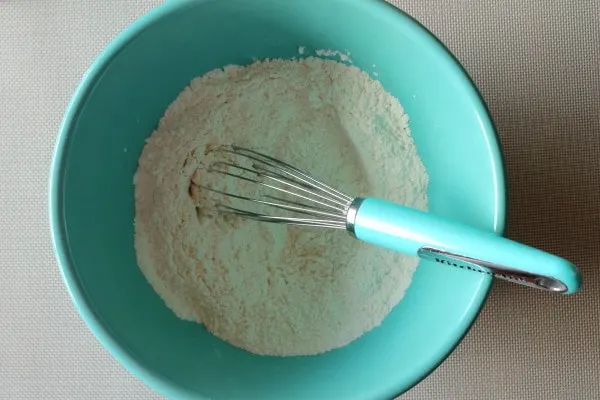
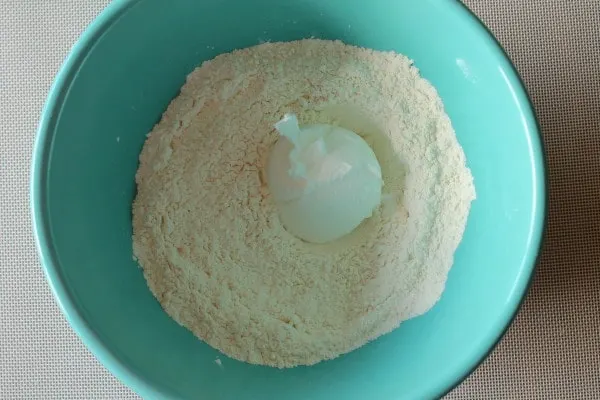
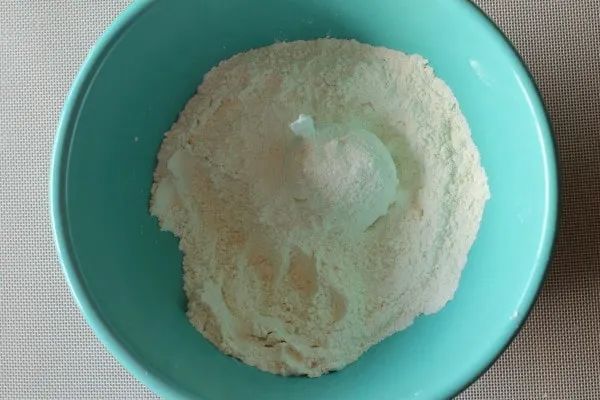
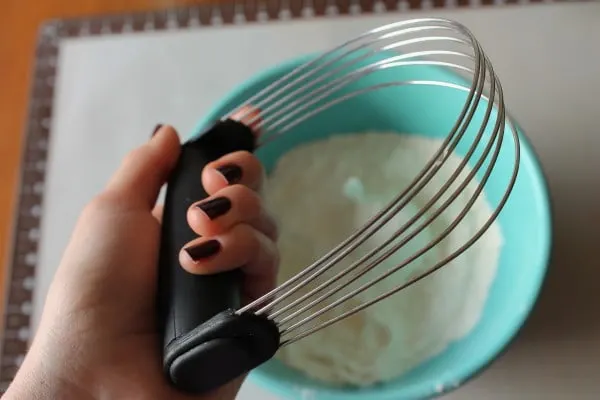
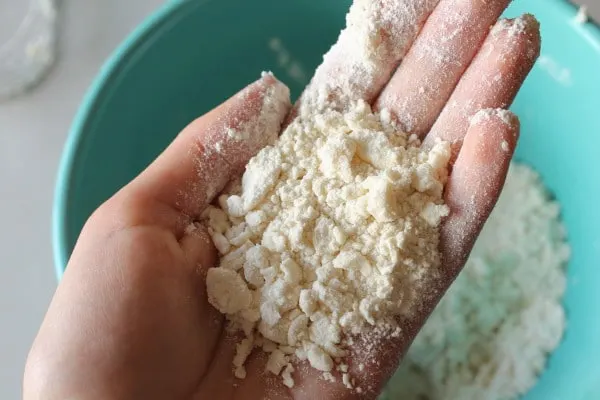
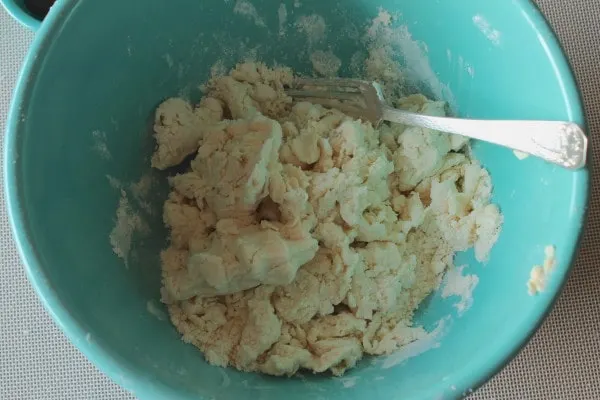
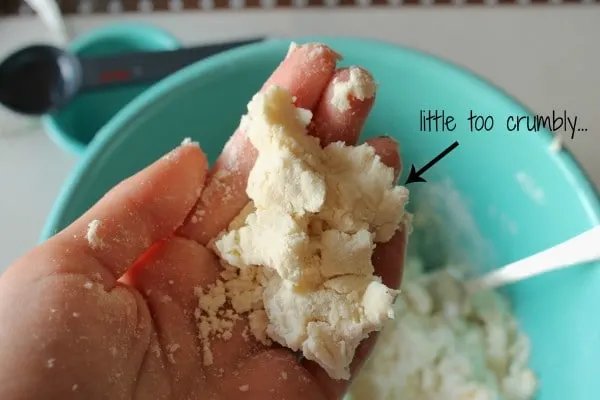
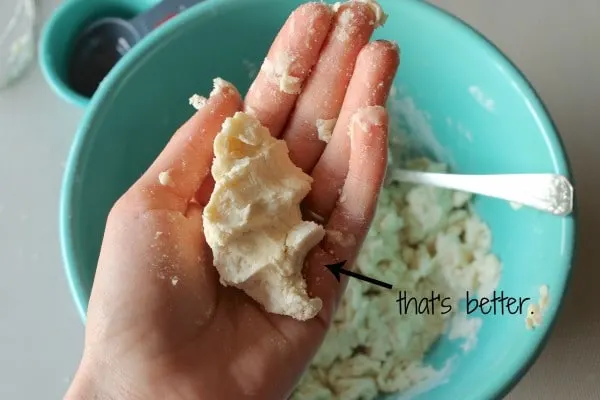
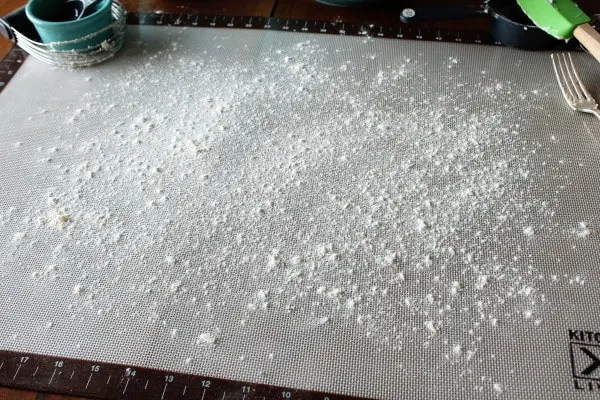
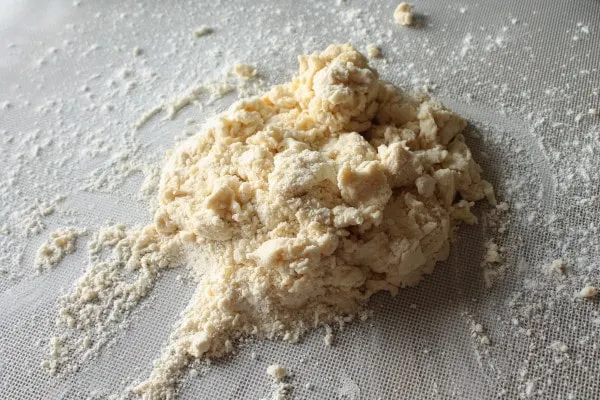
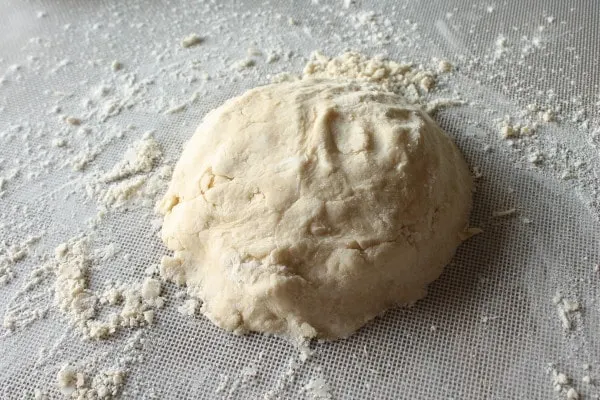
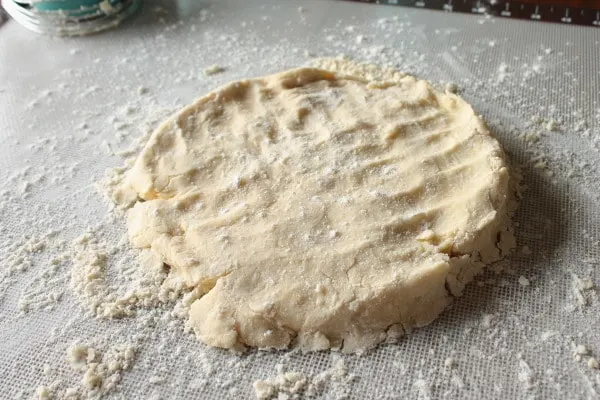
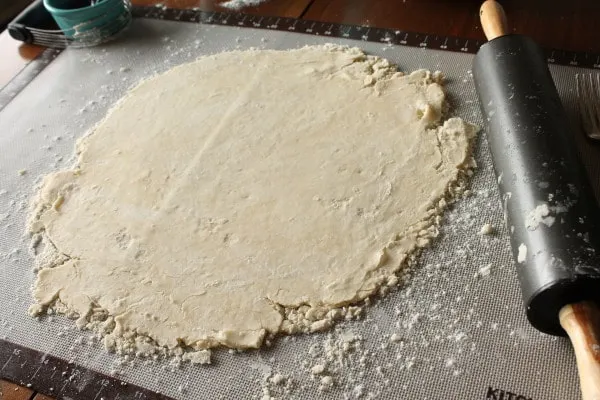
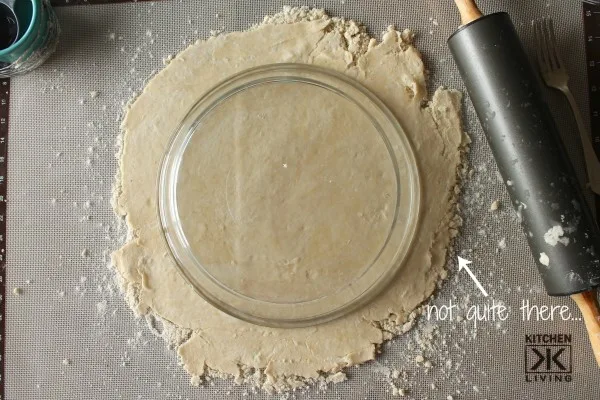
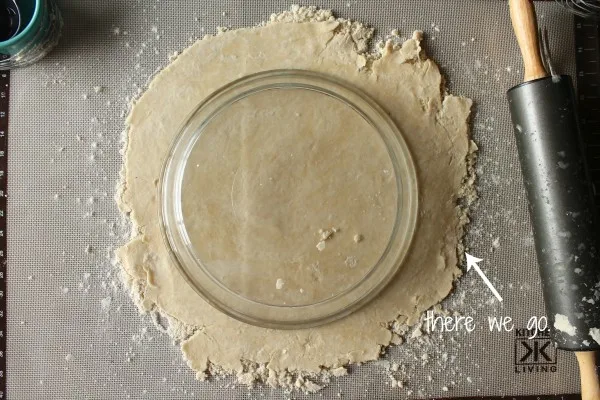
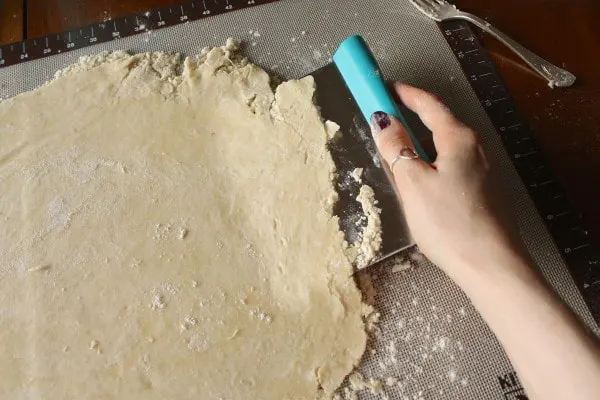
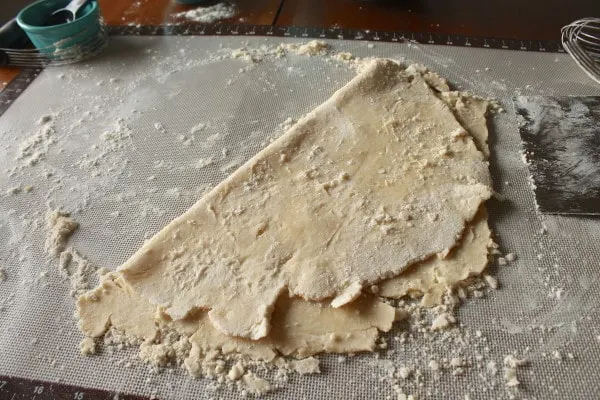
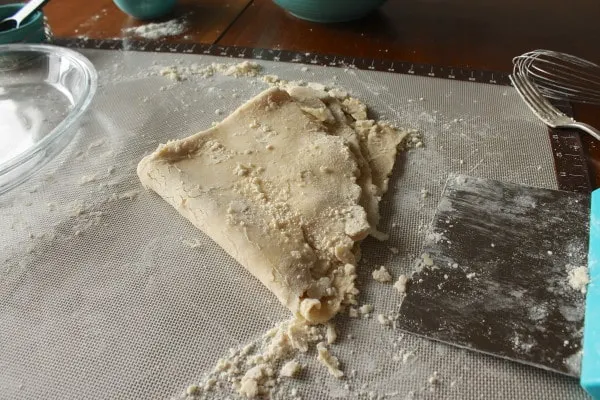
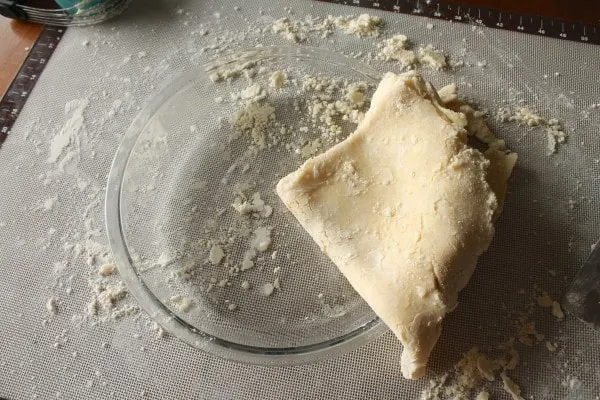
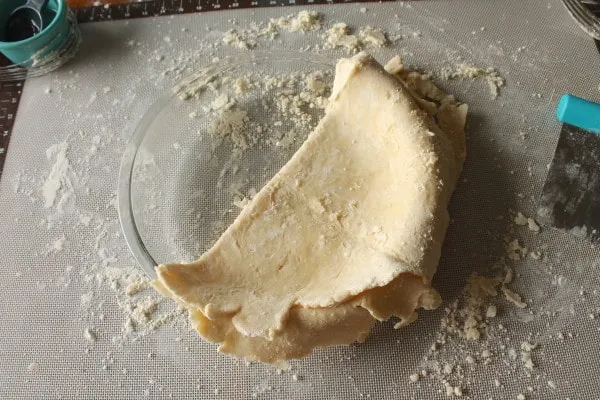
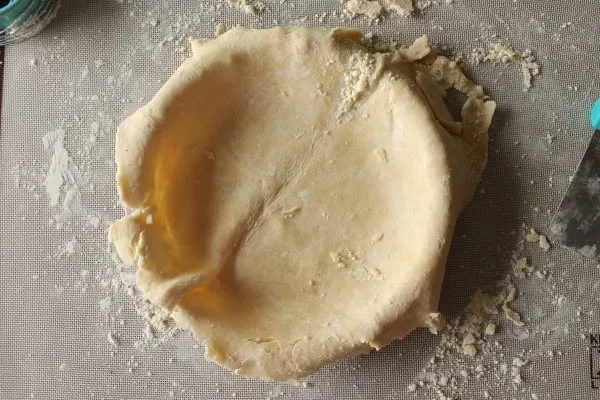
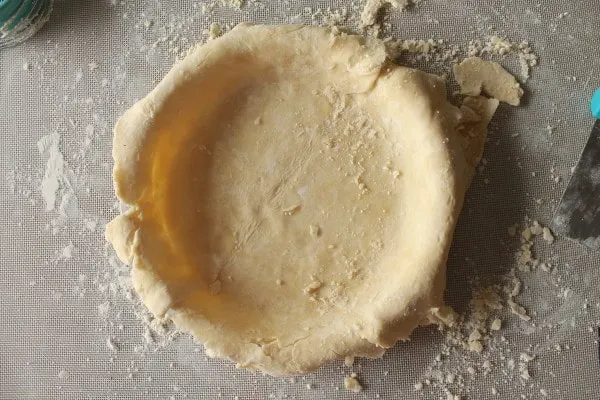
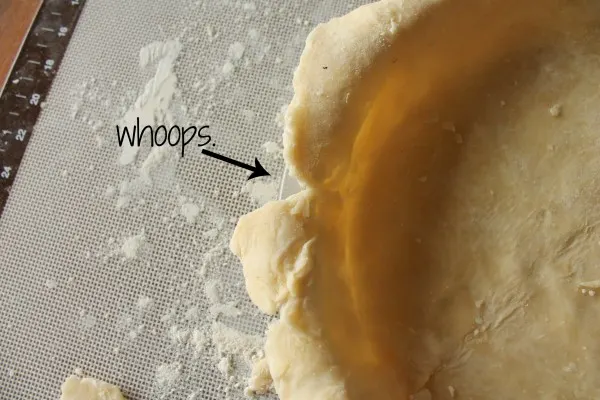
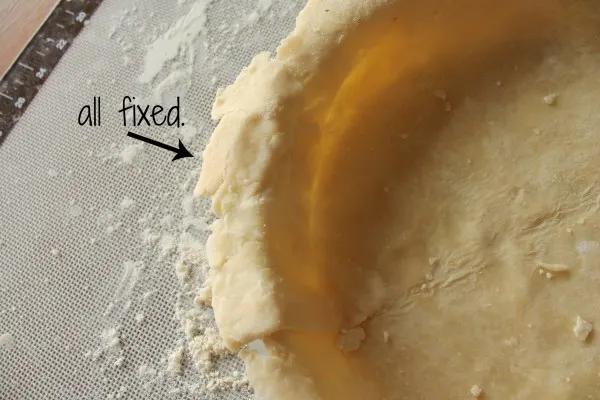
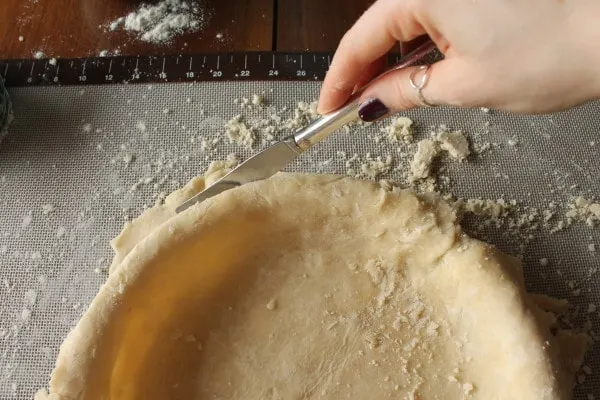
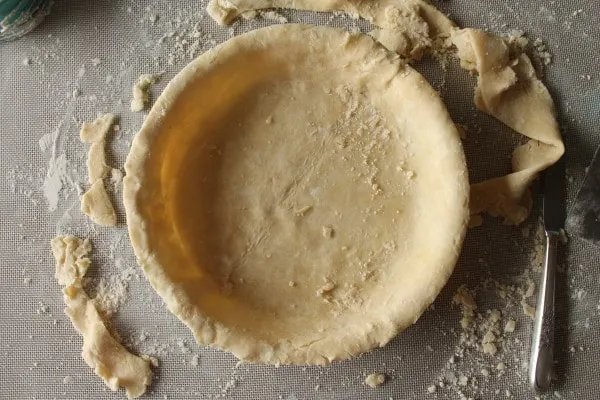
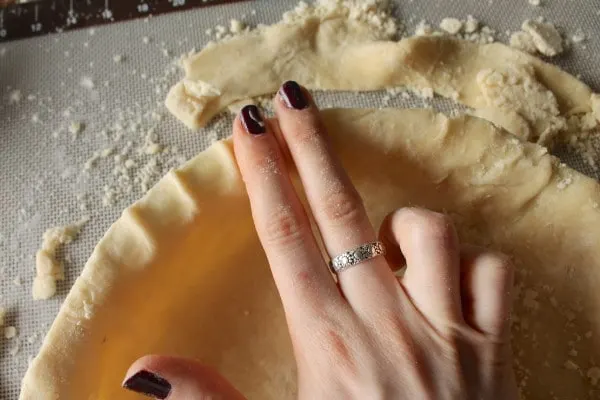
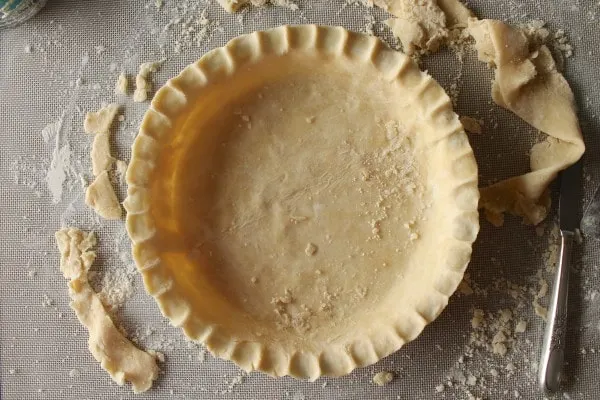
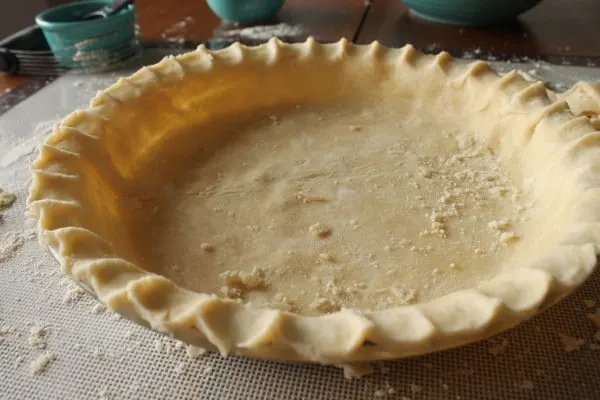
This is IMMENSELY helpful. I’ve been on the hunt for a great pie crust recipe for ages! The closest I’ve come is a Silver Palate recipe; this sounds better. I also love the fact that it’s from your mom’s home ec class. Talk about lasting power!
I am so glad you find it helpful! And I seriously think my family might revolt if my mom were to make a different pie crust. They’re pretty fanatical about my mom’s pie, and I think a lot of it has to do with her crust.
1. Where’s my crown? 2. No, your fluted edge looks a lot prettier than my edges do. Soon, you will be taking over my reign. 🙂
Wow this is a great tutorial! I am ashamed to say I have not made my own pie crust..I am not much of a baker but am trying to learn. I will definitely be referring to this!
It’s ok, there are a lot of people in your boat. But I promise pie crust doesn’t have to be scary! You can do it!
This was reeeally helpful! Your crust looks so pretty and perfect!!
(but shortening gives me the heeby jeebies :P)
Pie crust makes me giddy. Can’t wait to see what pie you made with that bad boy!
Beautiful tutorial! The crust looks perfect. So…. what kind of pie did you end up making with this gorgeous crust?
I may or may not have just baked it off with cinnamon-sugar and eaten it like that……..but that’s all hearsay.
I will be making blackberry pie for one. I’ve never done my own crust. thank you!!
Hooray!!!!
Okay… now I need to make pie. Like ASAP just so I can try this crust!!!
Thank you for this!! My grandmother uses wrapping paper to roll out her crust. The heavier works best and she uses the plain underside. It doesn’t stick and clean up is a snap!
What an interesting idea! Grandmother’s always have the best tricks.
I love the step by step pictures. I really love cooking and making stuff from scratch this was super helpful. I needed to know how to crimp the edges this was perfect. Thanks for all your help ; )
What you can’t see is me applauding you for making a pie crust! Yay! I’m so glad you found this helpful. If you make another, send me a picture of your beautiful creation!
I stir the salt into the flour; use the electric hand mixer to cut the butter into that till it looks all mealy; add the ice cold water while still using mixer till it starts to gather into the beaters; then stop and form a ball of the dough.
Roll it out on a duck cloth pastry cloth, with a knitted sock on my rolling pin after dusting the pastry cloth with some flour. When I get it to the right size and shape, I roll it onto the rolling pin and unroll it into the pie pan.
Works like a charm!
Hi Stephie – Thanks so much for sharing this with the Let’s Get Real party. Although I fall into the “butter camp” on pie crust, I definitely need help with my technique. This is a great tutorial.
Admittedly I rarely make my own pie crust :/ Your crust looks terrific Stephie! BTW, love the “oops” pic!
Thanks, Kari! I hope you give mine a try and I bring you to the dark side of only making one’s own crust 🙂
I’m actually making 3-4 pies for Thanksgiving so this tutorial is perfect! Homemade crusts normally scare me but this looks like fun!
If I had one wish it would be to be in your kitchen for just one day! Thanks for the great tutorial. May God bless you.